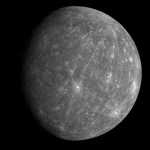The Sun is a remarkable star at the heart of our solar system. It provides essential light and warmth to Earth, making life possible. In this article, we will explore what the Sun is, how it works, and some fascinating facts about this vital star.
What is the Sun?
The Sun is a massive ball of hot gas, primarily composed of hydrogen and helium. As a G-type main-sequence star (or G dwarf star), it is the closest star to our planet, located about 93 million miles (150 million kilometers) away. The Sun is crucial for all life on Earth, as it provides the energy necessary for plants to grow and for humans to thrive.
- Size: The Sun is about 109 times wider than Earth, with a diameter of approximately 864,000 miles (1.4 million kilometers).
- Mass: The Sun accounts for about 99.86% of the total mass of the solar system. This immense mass creates a strong gravitational pull that keeps the planets, including Earth, in orbit.
How Does the Sun Work?
The Sun generates energy through a process known as nuclear fusion. In its core, hydrogen atoms fuse together to form helium, releasing an enormous amount of energy. This energy travels from the core to the surface and then radiates into space as light and heat.
- Core: The core is the innermost region of the Sun, where nuclear fusion occurs at extremely high temperatures (around 27 million degrees Fahrenheit or 15 million degrees Celsius).
- Radiative Zone: In the radiative zone, energy moves outward, taking thousands of years to reach the surface because it bounces around and is absorbed and re-emitted by particles.
- Convective Zone: The convective zone allows hot plasma to rise and cooler plasma to sink, creating convection currents that help transport energy to the surface.
Read This Also: Exploring the Milky Way Galaxy: Our Cosmic Home
Interesting Facts About the Sun
Here are some intriguing facts about the Sun that highlight its significance:
- Age: The Sun is approximately 4.6 billion years old and is expected to last for another 5 billion years before it exhausts its nuclear fuel.
- Sunspots: Dark spots known as sunspots appear cooler than their surroundings. These spots are caused by magnetic activity and can affect the Sun’s energy output.
- Solar Flares: The Sun occasionally releases bursts of energy called solar flares. These powerful explosions can send solar particles toward Earth, potentially disrupting satellite communications and power grids.
- Solar Wind: The Sun emits a constant stream of charged particles known as solar wind. This wind interacts with Earth’s magnetic field, creating beautiful phenomena like the auroras (Northern and Southern Lights).
- Light Travel Time: Sunlight takes about 8 minutes and 20 seconds to reach Earth. This means we see the Sun as it was a little over 8 minutes ago!
Why is the Sun Important?
The Sun plays a vital role in sustaining life on Earth for several reasons:
- Energy Source: The Sun provides the energy necessary for photosynthesis, enabling plants to produce oxygen and food.
- Climate Regulation: Solar energy influences weather patterns and climate on Earth, affecting everything from seasons to temperature.
- Day and Night: The Sun’s position in the sky determines day and night. When one side of the Earth faces the Sun, it experiences daytime, while the opposite side is in darkness.
Conclusion
The Sun is not just a bright object in the sky; it is a powerful star that drives life on Earth. Understanding the Sun helps us appreciate the balance and beauty of our solar system. As we continue to study the Sun, we unlock more mysteries about its role and impact on our world.
Next time you step outside and feel the warmth of the Sun on your face, remember the incredible processes occurring within it and the vital role it plays in our lives. By learning more about our Sun, we can better understand our universe and our place in it.




